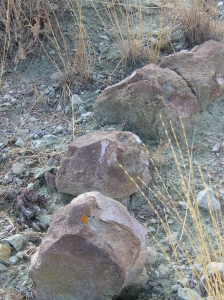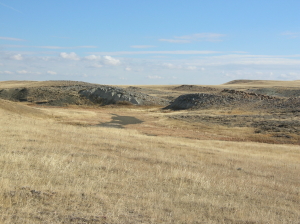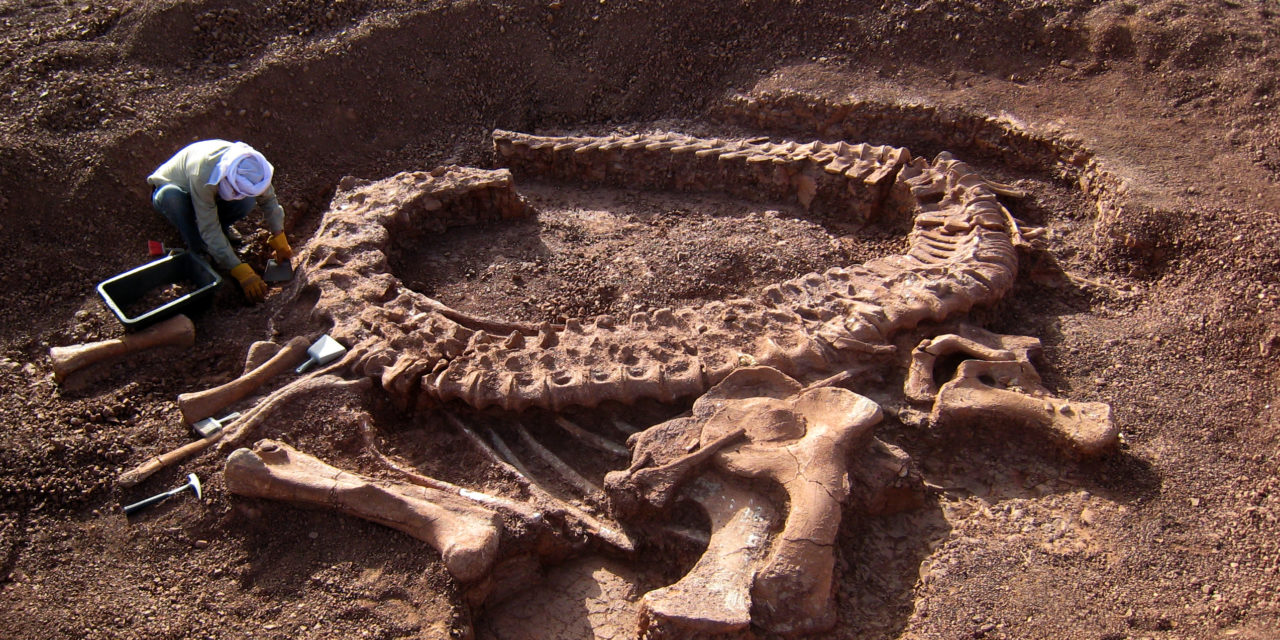At Greenfield Advisors, we have built a reputation on our ability to value a wide range of assets, from contaminated properties to trophy properties, and from an alpaca herd to pharmaceutical royalties. One of the many interesting projects we have worked on over the last 40 years involved appraising a property with outstanding ecological, cultural, and paleontological resources.
Determining the Highest and Best Use of the Spring Creek Preserve

The four criteria for determining highest and best use (Greenfield Advisors).
The Spring Creek Preserve consists of almost 5,000 acres that were previously part of the larger Cook Ranch holdings, roughly 50 miles northwest of Laramie in southeast Wyoming. The property is situated along the McGill anticline, a geologic structure of considerable importance for vertebrate paleontological research.
The property contains significant deposits of late Jurassic period dinosaur bones and other fossils. The Native American and early Euro-American archeological resources span more than 10,000 years, including campsites, burial sites, and a section of the original grade of the 1869 transcontinental railroad. The property is outstanding in its density and integrity of archaeologically and paleontologically significant material. It is also a fine example of indigenous prairie ecology, with wildlife including antelope, mule deer, elk, bighorn sheep, raptors, waterfowl, and game birds.
In 2000, the property owner asked Greenfield Advisors to estimate the market value of the fee simple interest of the property. He intended to use this appraisal in sales negotiations of the property, as well as to determine the amount of a charitable donation if the property was dedicated to a nonprofit research institution.
One of the first steps in any real estate valuation is to determine the highest and best use of the site (the most profitable of the legal, feasible uses). In this case, the highest and best use was clearly the preservation or development of the site’s archaeological and paleontological resources.
Using Comparable Sales
An appraiser usually determines the value of a property by reconciling different measures of value. The sales comparison approach is one of the three common approaches to value. In the sales comparison approach, the analyst compares the prices paid for properties that are similar to the property being valued. These comparable sales provide points of reference for establishing the value of the subject property after adjusting for differences in market conditions, location, physical characteristics, zoning, and conditions of sale.
To develop an opinion of value for the Spring Creek Preserve, Greenfield Advisors considered sales of other properties across the United States with archaeological and paleontological resources. After analyzing sales of 13 archaeologically significant properties and 15 comparable sales of land with fossils, we had a range of adjustment factors. However, there was no consistency in how these diverse properties were valued or purchased, so the analysis of comparable sales alone could not provide sufficient evidence to develop a well-supported opinion of value.
Using Income

Tail vertebrae from a sauropod found at Spring Creek (Greenfield Advisors site photo).
Another of the common approaches to value is the income approach. This approach estimates the present value of the net income the property is capable of producing. Because the highest and best use for the Spring Creek property would take advantage of its unique combination of historic, archaeological, geologic, and paleontological resources, we researched numerous non-profit educational facilities, parks, and commercial fossil quarries to obtain information about visitation trends, user fees and other revenue sources, overnight stays, and operational costs. This information was compiled to project a stabilized operational scenario for the Spring Creek property. Because on-site facilities supporting such programs would likely include a small museum or interpretive center, a gift shop, research facilities, limited food service, and an RV campground, we also conducted research to estimate the costs involved in site development and facilities construction. Value was estimated by capitalizing the projected net income at an appropriate rate and then subtracting the costs associated with the development.
Using Alternative Valuation Methods
We also consulted the survey research literature for this project. We used a conjoint analysis survey to determine how people value different types of archaeological and paleontological resources. During the conjoint analysis survey, respondents were asked their relative preference for a number of different features, such as ancient native living areas, arrowhead shavings, dinosaur bones, dinosaur tracks, and invertebrate fossils. Next, we had to estimate the value of the Spring Creek property for ranching purposes to establish a “baseline value” to which adjustments for archaeological and paleontological resources could be applied. Then we were able to use the results of the conjoint analysis survey and our data about the significance of the resources on the Spring Creek property to determine appropriate adjustment factors to apply to the baseline value.
Finally, although the Spring Creek property lacks the kind of scenic and recreational amenities typical of most trophy ranch properties, its scientific resources provide a unique aspect that would appeal to a high-end buyer seeking a “one of a kind” property. Therefore, we analyzed a set of high-amenity recreational ranch listings to develop an alternative estimate of value for the Spring Creek property as a trophy property.
What Were the Results?

Spring Creek Preserve (Greenfield Advisors site photo).
In 2005, the client asked us to update our appraisal for federal income tax purposes because ownership of the property was being transferred to the University of Pittsburgh. Due to its significant archaeological and paleontological resources and the revenue potential of educational/commercial development of those resources, the property was valued several million dollars higher than sites without such significant archeological resources.
The University of Pittsburgh Honors College now maintains the site as the Allen L. Cook Spring Creek Preserve, an education and research laboratory for its Wyoming Field Studies Program. Each year, the program brings University of Pittsburgh students to the Spring Creek Preserve to study disciplines such as paleontology, geology, archaeology, ecology, art, and history. A current art exhibit displays works produced at the Spring Creek Preserve last summer.






Recent Comments